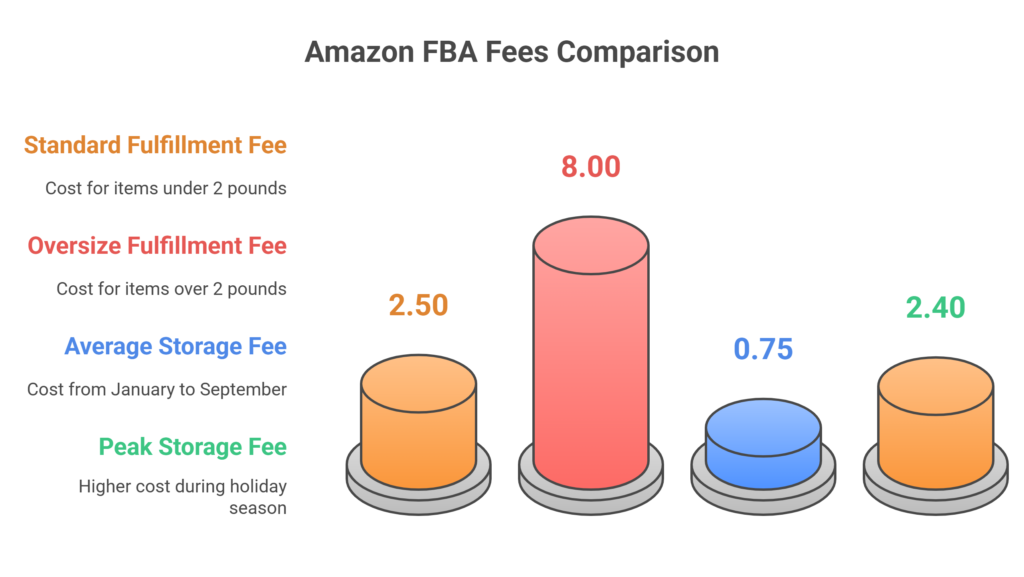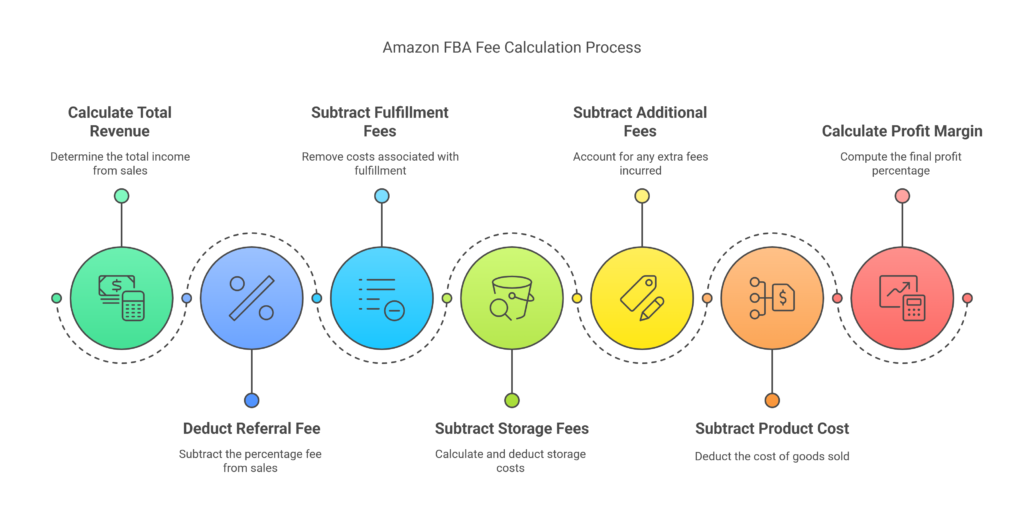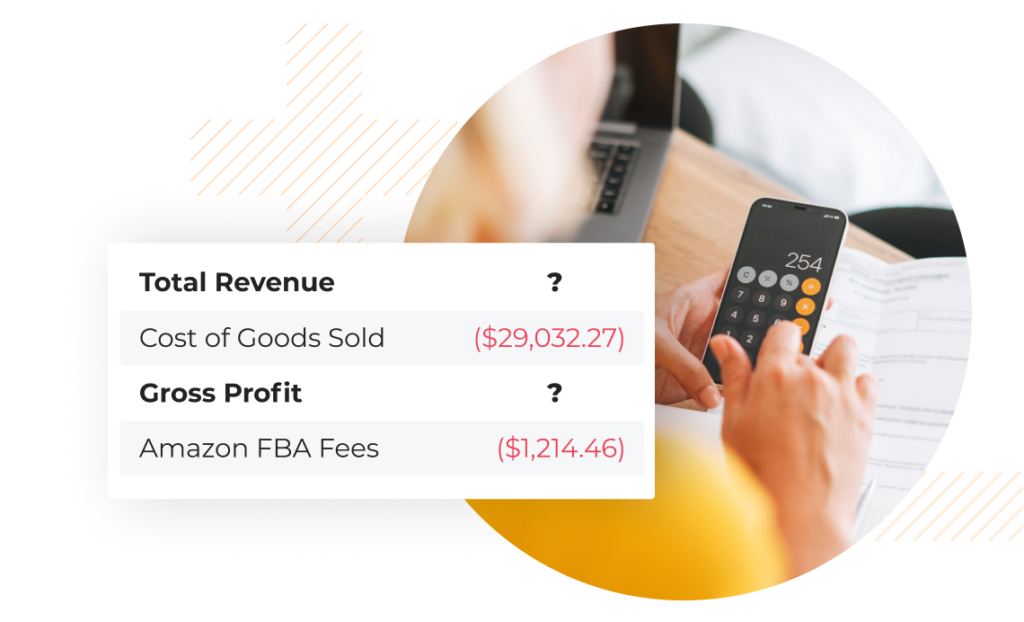Understanding Amazon FBA Fees: How to Calculate Your True Profit Margins
If you’re selling on Amazon, the Fulfillment by Amazon (FBA) program is likely a key part of your business model. FBA allows sellers to store their products in Amazon’s fulfillment centers, where Amazon handles storage, packing, and shipping. While this service simplifies operations, understanding the associated fees is crucial for calculating your true profit margins.
In this blog, we will break down the different fees you will be charged with in the Amazon FBA program and explain how to calculate your profit margins effectively so you can make smarter business decisions.
What Are Amazon FBA Fees?
FBA fees are those you pay using Amazon’s fulfillment network. These fees are going to change depending on size and weight, type of inventory, and if standard or oversized.
Here are the main types of fees you find as an FBA seller:
Fulfillment Fees
These are charges for when Amazon picks the products from their warehouses and ships them straight to your customers. The fuller and heavier it is, the more fulfilling charges will be and vice versa with less and lighter items.
Standard-Size Products: Merchandise that weighs less than 2 pounds cost about $2.50 a unit with a ceiling or escalate.
Oversize Merchandise: Oversize products that weigh over 2 pounds, and significantly larger than the standard size usually begin at about $8.00 per unit for fulfillment services again, and only goes as high as the scale and size go.
Storage Fee
Amazon will charge for warehouse storage, on a monthly basis, according to the size of your product and time of year. The time of year that may affect these fees, the storage charges will be more pricey during the holiday seasons, between October and December.
Average storage fees are between $0.75 per cubic foot from January to September.
Peak Storage Fees: For standard-sized items, between the months of October and December, peak storage fees may shoot up up to $2.40 per cubic foot.

Long-term Storage Fees
If products remain at Amazon warehouses for more than 365 days, then Amazon will charge the seller long-term storage fees. They are considered penalties to encourage the sellers to monitor their stock and move the unused products out of the warehouses.
Long Term Storage Fees:
These are charged semi-annually, that is, in February and August. For this, a rate of $6.90 per cubic foot or $15 per unit is charged, whichever is higher.
Referral Fees
Every sale you make through the service of Amazon incurs a referral fee. It is a percentage of the overall sale price. The percentage depends on what category of product your sale falls into. For instance, most electronics may have a referral fee of 8% while apparel will have a 15% fee.
Return Fees
If a customer returns a product, you’ll incur a return processing fee. This fee applies to standard-size products and is typically lower than the fulfillment fee, but it’s something to keep in mind when calculating your costs.
Standard Return Fee:
This can range from $3.00 to $6.00 per returned unit, depending on the product category.
Labeling and Preparation Fees
If you have special products that need some preparation before being stored or shipped, like labeling, poly bagging, or bubble wrapping, Amazon will charge you for these services.
Labeling Fee: This would usually be about $0.30 per unit, depending on your choice of whether to use the Amazon labels or not.
Preparation Fee: This fee will depend on what kind of preparation is required. For example, polybagging is at $0.15 per unit, while bubble wrapping is $0.50 per unit.
How to Determine Your Actual Profit Margins
You have to understand Amazon FBA fees if you want to know how much money you really make from each sale. All the costs you have to include have to be considered to come up with accurate profit margins.
Here is the step-by-step process on determining your actual profit margins on Amazon FBA:
Step 1: Calculate Your Total Revenue
Begin with adding the complete revenue you generated from the sale. This is the selling price for your product excluding any discount or promotion.
For instance:
Product price: $30.00
Shipping (if applicable): $0.00
Total Revenue: $30.00
Step 2: Deduct Amazon’s Referral Fee
Next, subtract the referral fee. The referral fee is a percentage of your product’s sale price, and it varies by category. For this example, let’s assume you’re selling an item in a category with a 15% referral fee.
Referral fee: 15% of $30 = $4.50
Revenue after referral fee: $30.00 – $4.50 = $25.50
Step 3: Subtract FBA Fulfillment Fees
Subtract FBA Fulfillment fees now. Suppose a standard size item weighs below 2 lbs. Let’s assume the FBA fulfillment fee is $3.00
Fulfillment Fee: $3.00
Revenue left after fulfilling fee: $25.50 -$3.00 = $22.50
Step 4: Subtract FBA Storage Fees
Estimate how much your product will use in storage based on space. Assuming it takes 0.1 cubic feet of space, and the standard rate of $0.75 per cubic foot, your monthly storage fee should be $0.075.
Storage fee: $0.075
Revenue after storage fee : $22.50 – $0.075 = $22.425
Step 5: Subtract any additional fees
Explain other fees which could apply such as storage for several months, setting up the products for shipping or attaching labels. Assume you also have a $0.30 labeling fee.
Labels: $0.30
Proceeds from labels: $22.425 – $0.30 = $22.125
Step 6: Subtract Your Product Cost
Subtract how much it really costs you to acquire or manufacture the product; the COGS. For your COGS let’s say you pay $10.00
COGS: $10.00
Revenue after COGS: $22.125 – $10.00 = $12.125
Step 7: Calculate Your Profit Margin
Calculate your profit margin. Divide your profit by the revenue to get your percentage.
Profit: $12.125
Profit Margin: ($12.125 / $30.00) * 100 = 40.42%
Hence, based on all these findings and calculation, after deducting Amazon’s FBA fees and your costs, your profit margin would be 40.42%.

Conclusion
The profit will be taken away by Amazon FBA if it is not understood correctly. With this knowledge now, you will understand exactly how to calculate your true profit margin and make perfectly informed business decisions. The way to succeed as an FBA seller lies in understanding all costs, including fulfillment, storage, referral fees, and extra costs, so you may price your product correctly and maintain a good profit level.
By keeping track of your expenses and optimizing your listings for profitability, you can maximize your earnings and grow a sustainable business on Amazon.
